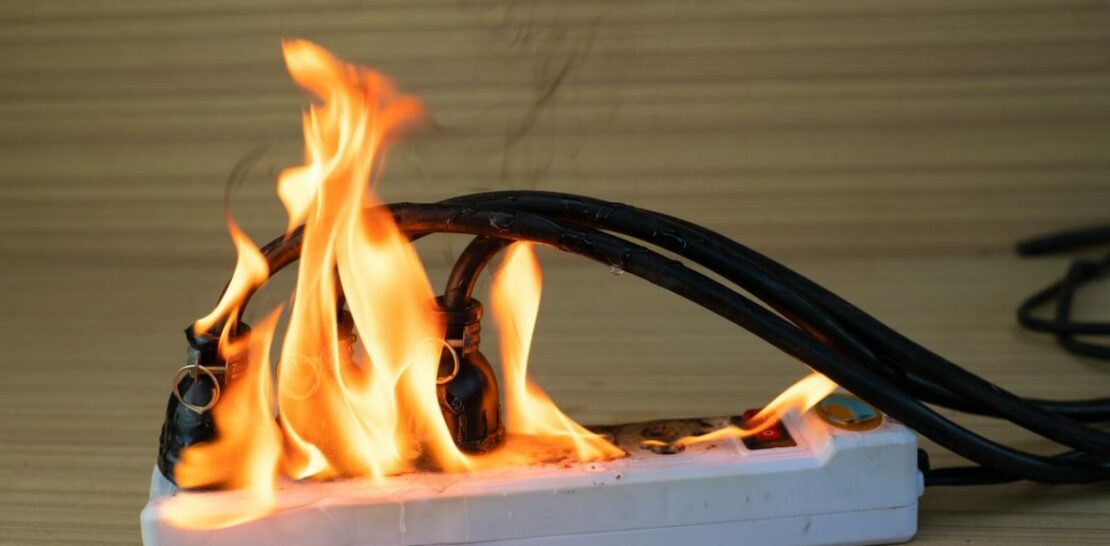Power strips have become a common household item, providing a convenient solution to the ever-growing demand for electrical outlets.
As the number of electronic devices in our homes and offices increases, so does the need for a safe and efficient way to power them.
However, not all devices are created equal, and some should never be plugged into a power strip.
This comprehensive guide will delve into why certain devices should never be connected to a power strip, the potential dangers of doing so, and the best practices for ensuring electrical safety in your home or workplace.
Read on to become an expert on this critical aspect of electrical safety.
The Perils of Overloading Power Strips
Before diving into the specific devices that should never be plugged into a power strip, it is essential to understand the dangers of overloading a power strip. Overloading occurs when the total power drawn by all devices connected to the power strip exceeds its capacity. This can lead to several hazardous situations, such as:
- Overheating: When a power strip is overloaded, it generates excessive heat, which can cause the strip itself, as well as the devices connected to it, to overheat. Overheating can cause damage to the devices and, in extreme cases, result in a fire.
- Electrical shorting: Overloading can lead to electrical shorting, where an unintended electrical connection occurs between two conductive materials. This can cause sparks and potentially start a fire.
- Damage to devices: Continuous overloading can cause devices connected to the power strip to wear out and become damaged over time. This can result in the need for costly repairs or replacements.
To avoid overloading a power strip, it is crucial to be aware of the power draw of the devices you are connecting and ensure that the total does not exceed the power strip’s capacity. Furthermore, recognizing the devices that should never be plugged into a power strip is a crucial step in preventing overloading and ensuring electrical safety.
High-Power Appliances: A Recipe for Disaster
One of the primary reasons certain devices should never be connected to a power strip is their high power consumption. High-power appliances, such as refrigerators, air conditioners, and space heaters, draw a significant amount of electricity, increasing the risk of overloading the power strip and causing it to overheat. The following appliances are examples of high-power devices that should never be plugged into a power strip:
- Refrigerators and freezers: These appliances require a large amount of power to maintain their low temperatures, especially during startup. Plugging them into a power strip can quickly lead to overloading and potential hazards.
- Air conditioners: Like refrigerators, air conditioners consume a significant amount of electricity, particularly during start-up. This high power draw makes them unsuitable for connection to a power strip.
- Space heaters: Space heaters are notorious for their high power consumption, and plugging one into a power strip is a surefire way to overload it. This can result in overheating and even pose a fire risk.
- Ovens and microwaves: Cooking appliances such as ovens and microwaves draw a considerable amount of power, especially when in use. Connecting these appliances to a power strip can lead to overloading and other electrical hazards.
By avoiding the connection of high-power appliances to power strips, you significantly reduce the risk of overloading and its associated dangers.
Power-Hungry Electronics: The Hidden Dangers of Overloading with Small Devices
While high-power appliances are the most obvious culprits when it comes to overloading power strips, it is important not to underestimate the potential dangers posed by smaller electronic devices. Many of these devices, such as computers, gaming consoles, and televisions, still consume a substantial amount of power, particularly when used simultaneously. This can quickly lead to overloading and the associated risks. Here are some examples of power-hungry electronics that should be used with caution when connected to a power strip:
- Computers: Whether you’re using a desktop or laptop computer, these devices can draw a significant amount of power, especially if multiple peripherals (such as monitors, printers, and speakers) are connected as well.
- Gaming consoles:Modern gaming consoles, such as the PlayStation, Xbox, and Nintendo Switch, require a considerable amount of electricity to run, particularly during intensive gaming sessions. This power draw can contribute to overloading a power strip if not managed properly.
- Televisions: Large flat-screen televisions can consume a significant amount of power, especially when used in combination with other home entertainment devices, such as sound systems and streaming devices.
- Audio equipment: High-quality audio equipment, such as amplifiers and speakers, can also contribute to overloading a power strip if not managed correctly.
While it may be tempting to plug all of your electronic devices into a single power strip for convenience, doing so can lead to overloading and potential hazards. To mitigate these risks, consider spreading out your devices across multiple power strips or using a dedicated power strip for high-power electronics.
Charging Stations and Surge Protectors: The Importance of Proper Usage
Power strips are not the only devices that can pose a risk when it comes to overloading. Charging stations and surge protectors are also commonly used to power multiple devices simultaneously and can be subject to the same dangers if not used properly. Here’s what you need to know about proper usage and best practices for these devices:
- Charging stations
- Charging stations are designed to provide power to multiple devices, such as smartphones, tablets, and laptops, at once. While these devices typically have built-in safety features to prevent overloading, it is still important to avoid connecting too many power-hungry devices at once. Be mindful of the charging station’s capacity and ensure that the total power draw does not exceed its limits.
- Surge protectors
- Surge protectors are designed to protect your electronic devices from power surges, which can cause damage or even destroy the device. However, like power strips, surge protectors have a maximum capacity and can become overloaded if too many devices are connected. To prevent overloading, ensure that your surge protector is properly rated for the devices you are connecting and avoid using multiple high-power devices simultaneously.
By using charging stations and surge protectors responsibly, you can protect your devices from potential damage while also minimizing the risk of overloading and the associated hazards.
In conclusion, understanding the risks associated with overloading power strips, as well as the specific devices that should never be connected to them, is essential for ensuring electrical safety in your home or workplace. By avoiding the connection of high-power appliances and power-hungry electronics to power strips, and using charging stations and surge protectors responsibly, you can minimize the risk of hazards such as overheating, electrical shorting, and damage to your devices. Remember, electrical safety is a shared responsibility, and taking the time to educate yourself and others on best practices can help prevent accidents and keep everyone safe.




